The Most Exciting City in America?
Hello and welcome my Steemian friends to a new episode of "The Most Exciting City in America?" !!!!!
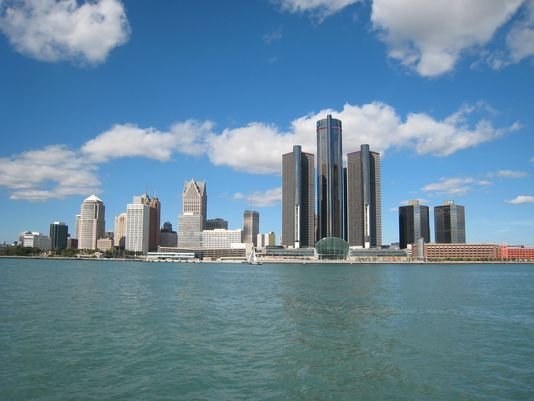
I've generally discovered the most ideal approach to peruse a city's state of mind is on a bike. You move at a speed that takes into account a sort of shared handshake with the urban geology.
This past summer I shook hands with Detroit. In particular, I agreed to accept Slow Roll, a mass social bicycle ride. Moderate Roll (articulated "Sloow Roooooooooll!") was helped to establish seven years prior by Jason Hall and Mike MacKool as a little, diverse gathering of cyclists who reinforced while riding motorless in the Motor City, avoiding the police and potholes and incensed drivers. Throughout the years, Slow Roll has developed and grown up close by its main residence and now the Detroit police escort upwards of 4,000 Slow Rollers on a week by week ride intended to feature one of the city's numerous notable neighborhoods.
Lamentably, the Slow Roll I should participate in was crossed out hours previously its begin in view of an undermining storm. Be that as it may, as the well-known axiom goes, "80 percent of life is appearing." So I appeared.
The Slow Roll gathering point, before the old Masonic Temple, was a phantom town. There was me, a youthful African-American man named Woody who had been Slow Rolling since the start ("Since before the start") and three moderately aged white ladies who had rolled in from suburbia. This was their first Slow Roll and they hadn't heard the ride had been wiped out.
"Try not to stress," said Woody. "They're coming."
The ladies looked suspicious underneath their bike protective caps. In the no so distant past suburbanites infrequently came downtown. I went by Detroit in 2001 and being panicked by how purge the boulevards were. It felt like the start of a zombie end of the world motion picture. The national media took an interest in developing this picture of Detroit as a definitive fizzled American city, shrewdly nourishing general society's craving for destroy porn with photographs of rotting structures, grand performance centers disintegrating into tidy, trees growing through dividers.
Throughout the most recent five years, be that as it may, Detroit's downtown passage has seen a veritable blast in land venture. A lot of this development was hastened by Dan Gilbert's presently renowned choice to move the central station of his home loan loaning organization, Quicken Loans, to a building sitting above Campus Martius Park in 2010. Mr. Gilbert, the "chairman of Gilbertville," as he is some of the time mockingly called, now possesses a huge part of the downtown, more than 60 properties altogether. Today, the walkways of Gilbertville are stuffed with recent college grads taking a break from shoreline volleyball to taste make lager and snack on high quality pickles.
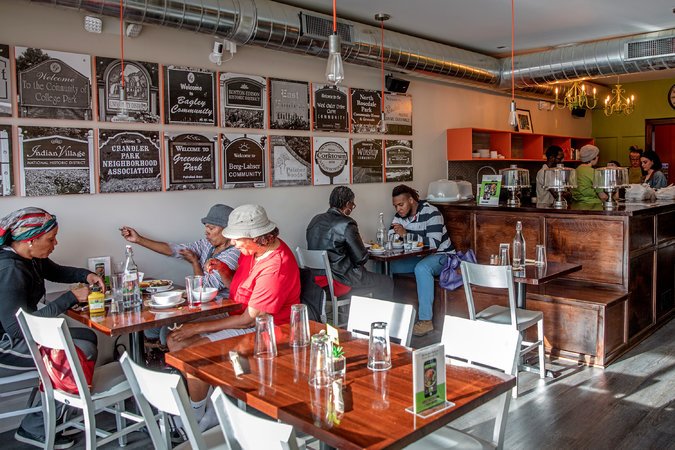
As private enterprise comes back to Detroit's downtown in all its hot structures, you can see the city appear before your eyes. It resembles viewing hot magma cool: There is Gather, the popular new common table eatery; there is the Little Caesars Arena, the new home of the Pistons and Red Wings; there is the new Q-Line streetcar whispering down Woodward Avenue; there is the future home of Shinola's boutique lodging (another Gilbert joint).
In Detroit, what's to come is as yet being composed. Over and over I felt wired with potential outcomes, educated in expansive part by the trailblazers I was conversing with. However huge numbers of these same trend-setters — group activists, specialists, entrepreneurs — disagreed with the in vogue thought of "Another Detroit," as this term generally disregarded the savagely autonomous and imaginative soul that has existed in the city for a considerable length of time and made Detroit such a sanctuary for creatives and visionaries in any case.
To be sure, the individuals who have been here for the whole deal were suspicious that the enormous redevelopment downtown would mean any sort of maintainable change in the encompassing neighborhoods, zones that to a great extent endured the worst part of the Motor City's long decay. How Detroit explores the different risks of recovery and gentrification appears an especially piercing inquiry given that this year is the 50th commemoration of the 1967 Detroit race revolts that uncovered the profound strains imbued inside a city that remaining parts a standout amongst the most isolated in the nation.
BACK AT THE Masonic Temple, the rural ladies were becoming eager in their activewear.
"Possibly we should abandon," one of them said.
"Goodness, they're coming. I wager you," said Woody. "On the off chance that 100 individuals show up, you're getting every one of us supper."
We held up. Furthermore, beyond any doubt enough, they began to come. What's more, come. Detroiters, it turns out, won't be demoralized. Out of need, they have figured out how to overlook counsel from authorities and make do themselves. All things considered, it was just four years back that their city looked into going chapter 11, the biggest American city to ever to do as such. The nearby city government had everything except quit giving fundamental administrations. Waste containers went uncollected. 40% of all streetlights were out. In many parts of town, the police would not come in the event that you called. Entire squares were surrendered, scourged. Grass developed tall; the wild was recovering the city.
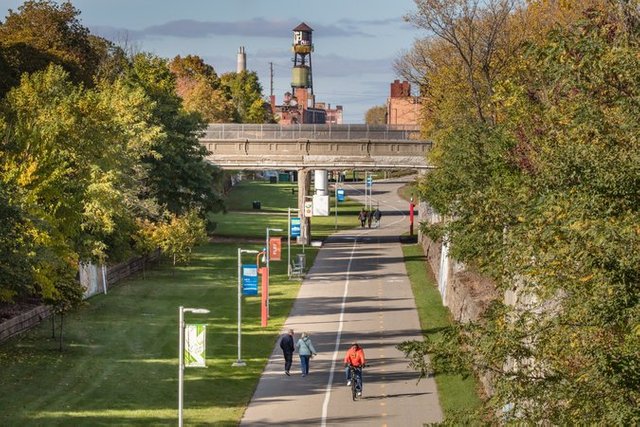
However, all through this time, Detroiters endured, as they generally had. To a great extent abandoned by general society part and a foundering vehicle industry, individuals adjusted, dealing for administrations, exchanging welding work for a D.J. gig, establishing their own particular reusing program, framing effective nearby group associations that satisfied the part typically saved for the legislature.
Throughout the years, innumerable craftsmen like Dabls ("Iron Teaching Rocks How to Rust"), Tyree Guyton ("The Heidelberg Project"), and Mitch Cope and Gina Reichert ("Power House Productions") asserted the city as their canvas, changing ignored structures into significant workmanship pieces more influencing than anything found in a gallery. Urban ranchers changed over empty parcels into wellsprings of natural create. The national account from this time was typically about how an once-incredible twentieth century city was obviously kicking the bucket before our eyes, yet this was likewise the narrative of how the natives of Detroit kept on flourishing, reclassifying what a 21st-century city may resemble.
Possibly a 21st-century city resembles a horde of Slow Rollers. Individuals from all kinds of different backgrounds. All hues. Some were riding blender bicycles, some were on deceived out skull and chrome low riders. A few people were in wigs. Many had expound blast box set ups, just as music had been developed exclusively to play on a social bicycle ride.
"Despite everything they're coming," Woody said. "We would've gotten 3,000 in the event that they hadn't scratched off."
We wound up with around 200 riders. The rainstorm never came. Woody benevolently did not call attention to that the incredulous suburbanites owed every one of us supper.
Since this wasn't an approved Slow Roll any longer, we needed both an official pioneer and a police escort. Regardless: we all in all picked a course and policed ourselves, much the same as the past times. We moved moderate, crashing our chimes as we conveyed activity to a halt. To stop activity in the Motor City utilizing just the energy of 400 bike wheels is a delectably capable inclination. Delight was noticeable all around. Somebody was playing D.J. Lively Jeff at noisy volume. The city wrapped us in its arms. We moved down Cass Avenue, over Interstate 75 to Detroit's recently patched up waterfront, past youngsters cartwheeling through geometric wellsprings and couples walking around sees. Over the smooth Detroit River we could see the low-threw horizon of Windsor, Ontario.
"Sloow Roooooooooll!" we shouted at Canada.
The man alongside me had unstably joined a mammoth speaker to the back of his bicycle with a bungee string and was impacting "Purple Rain." Prince impelled us. From the waterfront, we turned north, heading up the Dequindre Cut Greenway, another bicycle way that follows a surrendered rail line from the waterway to the hip Eastern Market area, home of a sprawling ranchers market and yearly open wall painting celebration.
Like the High Line in New York City, the Dequindre Cut is a keen bit of mechanical adjustment. Shielded from the city through which it cuts, the underpasses of the Cut are enhanced with stunning authorized spray painting wall paintings that fill in as a sort of open contemplation on urban recuperation. One piece by the craftsman FEL3000ft peruses, "A star is conceived through colossal weight and we have had what's coming to us. That reference point of light you find oblivious is our reasonable city ascending from the night sky."
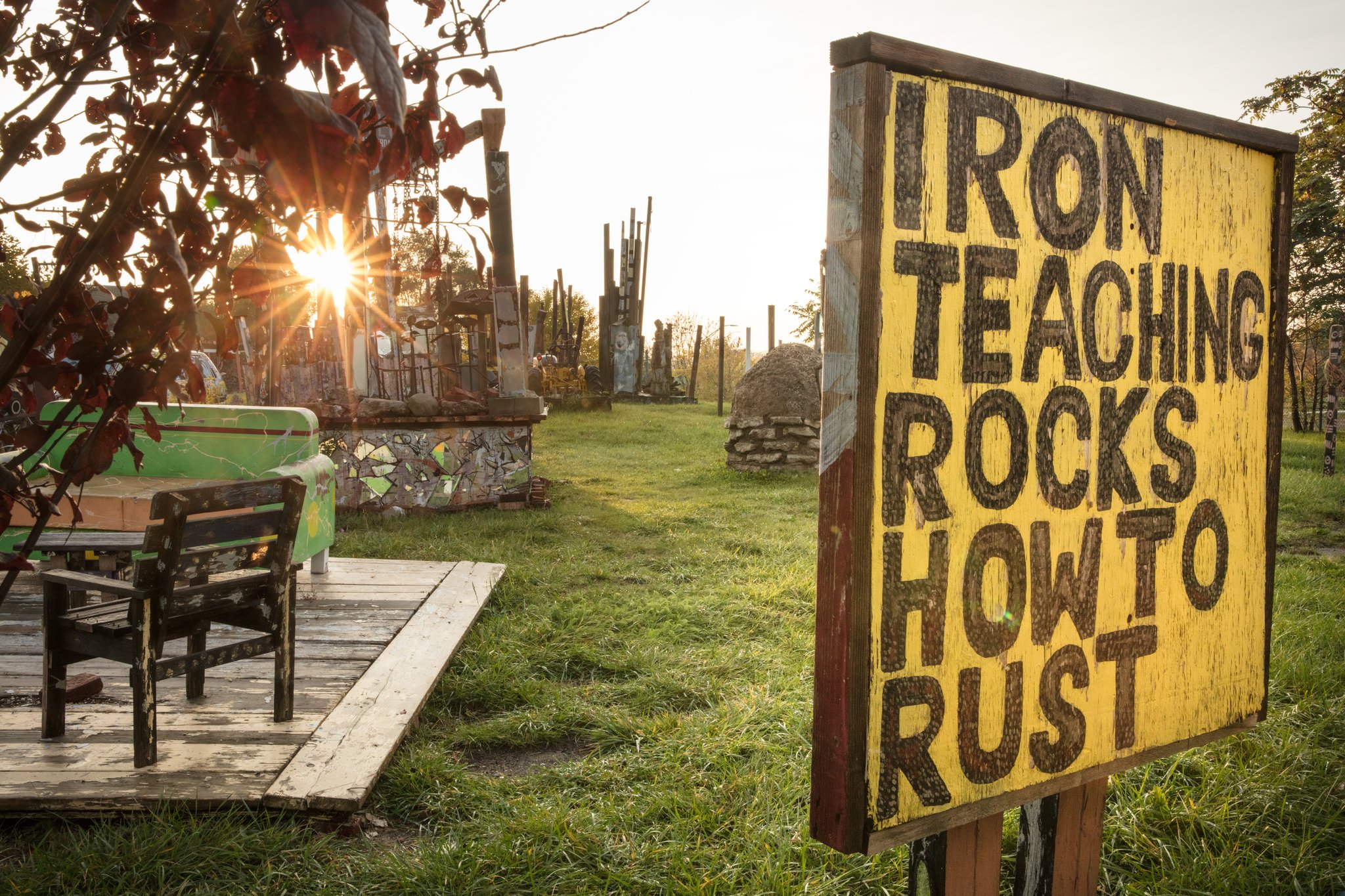
THERE ARE PLANS to broaden the Greenway into a goliath circle around the city. Moderate Roll prime supporter Mr. Corridor needs to begin a program that gives each national a bicycle. There is space to think beyond practical boundaries in Detroit, to do things that would be inconceivable wherever else, and this is a piece of the reason it feels like the most energizing city in America at the present time.
I met with a gathering of roused secondary school and undergrads who were working with Phil Cooley, prime supporter of the business-hatchery Ponyride, and Ben Wolf, an outline/manufacture fabricator, to build the Dequindre Cut Freight Yard, a compact bistro, D.J. stall and structure made totally out of measured dispatching holders.
"It's cool to really be changing the place I live," said Jose Vasquez, a calm senior at Western International High School.
"Remind me to enlighten you regarding my next task," said Mr. Wolf as I was taking off.
In Detroit, there is dependably a next undertaking. Such creativity is overflowing over the city. The day after my bootlegged Slow Roll, I went by Recycle Here!, which, at first glance, looks like your normal reuse drop-helter-skelter — plastic goes here, daily paper there. Reuse Here! was established in 2005 by Matthew Naimi, a stocky, unshaven man with a barrel chuckle and a solid feeling of the strange. In those days, the city did not have any sort of authority reusing program. The Saturday drop-off days, similar to the Slow Roll, rapidly moved toward becoming group occasions. Everybody turned out, exchanged old garbage and began to manufacture bizarre models out of the can't.
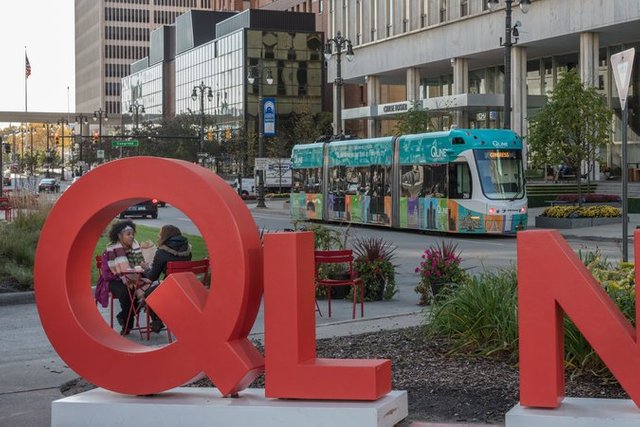
"What's more, in case you will have a reuse focus then clearly you require band hone rooms," Mr. Naimi snickered. Clearly. This soul of utilitarian-lobbyist creativism flourishes at Recycle Here's! sprawling office that incorporates the Lincoln Street Art Park, a populist space of reuse and coordinated effort, and site of more than one amazing open air party (the proverb, "Offer Your Candy," is noticeably shown). Reuse Here! additionally pursues a vigorous school and camp program that teaches youngsters on ecological stewardship and supportability.
I pondered supportability amid my opportunity in Detroit. We tend to imagine manageable urban areas as far as green engineering, sustainable power source, an accentuation on inventive mass travel. By a large number of these measurements, Detroit keeps on battling, to a limited extent since its populace is scattered crosswise over such a gigantic region, around 139 square miles, of which 40 square miles, a region double the span of Manhattan, stand empty.
Open transport in the city is woeful. In a celebrated instance of suburbanite heck, an assembly line laborer named James Robinson needed to take a transport partially to work and after that walk the other 21 miles round-trip. He would return home at 4 a.m., and need to leave for work again at 8 a.m. Detroit is the biggest American city without a legitimate open travel expert, and a great part of the protection from any sort of strong travel design can be followed to a longstanding question between the well-off rural areas and the city's low-pay neighborhoods.
This could change. The city simply opened its initially working streetcar in more than 60 years, the Q-Line, which was to a great extent secretly supported and keeps running from Campus Martius all over Woodward Avenue for 3.3 miles. The Q-Line has gathered some debate as being essentially a "show horse" directed to voyagers that does not give any genuine driving advantage to numerous Detroiters like James Robinson.
Maybe. In any case, each upset needs a show horse. This past summer I rode the Q-Line a little while after it initially opened, before an admission was being gathered. The cable car was pressed with youthful and old, highly contrasting. Everybody had an assessment about the streetcar; everybody was all of a sudden a specialist on the complexities of urban transportation. As we slid past structures being hurled at a lightning pace, I had a feeling that I was on a Disney ride. See the future American City being worked before your eyes!
Some portion of the Q-Line's difficult task is that the American City being referred to is still especially the Motor City, imagined around the exemplified mindset of the vehicle. Over and over I wondered about the proficiency of an Interstate System intended to infiltrate profound into the urban network.
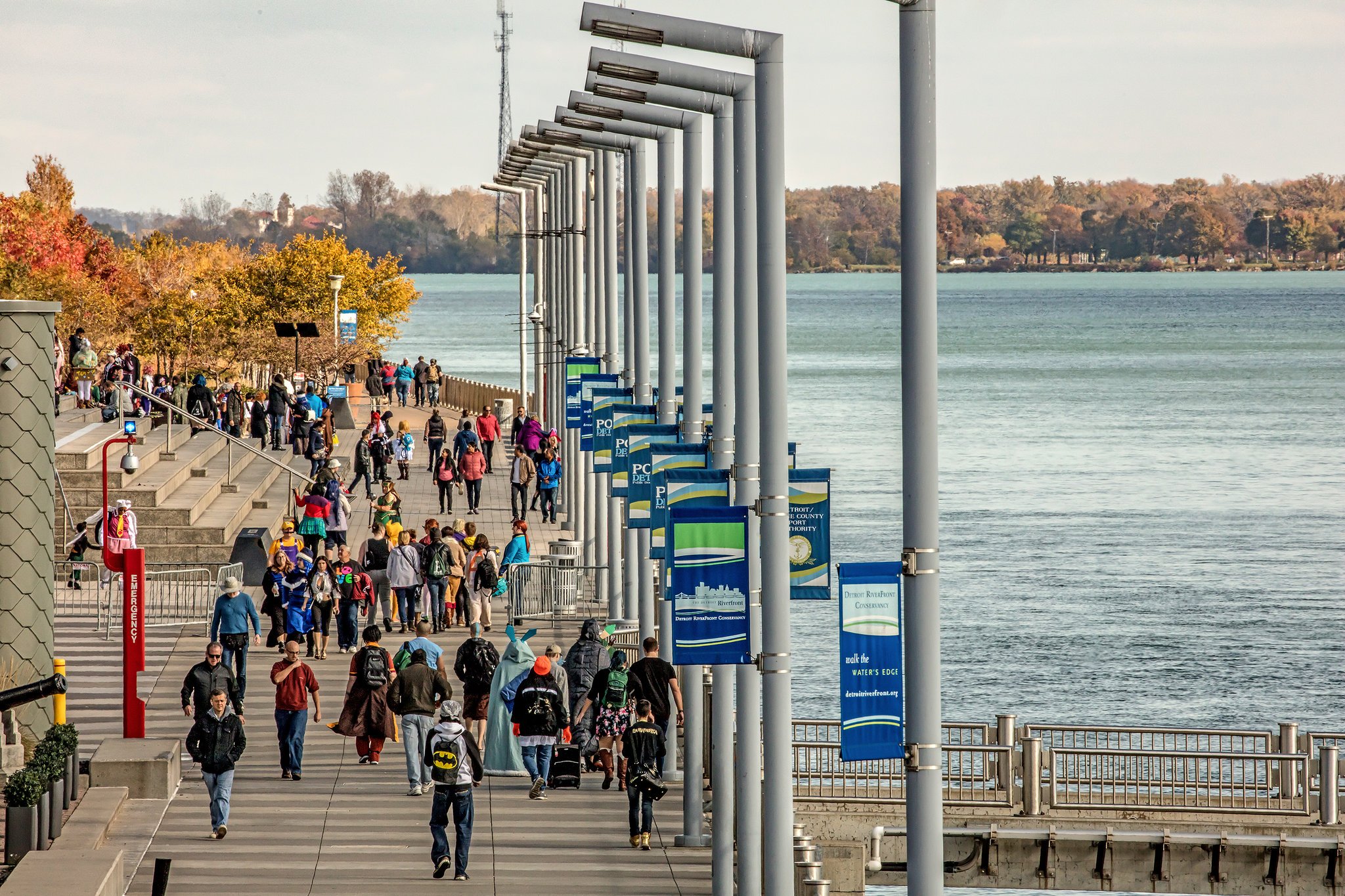
Given that Detroit has lost more than 60 percent of its populace since the prime of the 1950s, there is not really any movement on these thruways, enabling you to basically get from any two focuses in around 10 minutes. When I drove, I was ahead of schedule to each meeting. It was the American dream! But it wasn't: As I wandered down generally purge four-path expressways in my Ford Fiesta rental, I turned out to be intensely mindful that, not at all like on the Slow Roll or Q-Line, I wasn't meeting anybody. I was distant from everyone else, caught in a cover. The auto, once hailed as the way to each major United States city, is basically the fixing of natural urban union.
While in the past Ford and G.M. have been blamed for disregarding the requirements of the place where they grew up, both auto organizations have started to move toward grasping the 21st-century Detroit native, who either can't bear to possess an auto or else may pick not to. Portage specifically has rebranded itself as a "portability" organization, putting vigorously in new ride sharing innovation.
I went to Ford's sprawling grounds in Dearborn, Mich., and met with Jessica Robinson, executive of City Solutions, in a transcending white carport space encompassed by Ford Fusions that had been changed over into independent vehicles, their trunks stuffed brimming with processors. A close-by screen shockingly showed the world from the auto's viewpoint. I was a green glimmering blob.
"We can't simply adopt the thought process of an auto organization any longer," Ms. Robinson said. "We need to wind up ethnographers. So we went into groups and asked how individuals were getting around to attempt and address arrangements starting from the earliest stage."
Passage began an opposition called Go Detroit Challenge, which supported six Detroit tech organizations chipping away at imaginative transportation arrangements including CART, a program which sets clients, ride share organizations, and supermarkets to empower low-wage populaces more prominent access to sound nourishment.
This year both Ford and G.M. have multiplied down on the powerful combo of electric vehicles and driverless innovation. This was additionally the year I at long last dove in and purchased Chevy's all-electric Bolt EV, which includes a scope of 248 miles for each charge. Driving the Bolt out of the blue was an enthusiastic ordeal for me; it resembled touching what's to come. No more service stations, no more emanations. The perfect torque of an electric motor, both whisper-calm and prompt, is addictive. I will never backpedal.

As more autos like the Bolt EV end up noticeably accessible, it's energizing to see auto organizations in the United States indeed on the front line of development. Perhaps one day Detroit's delightful, purge interstates will transform into waterways of individuated, self-governing mass travel. Everybody can read books while they get raced around in driverless Lyft vehicles. It sounds utopic. It additionally sounds sterile. Such algorithmic effectiveness is the inverse of Slow Roll's muddled, communitarian, communalism.
I wound up examining autos and group (and books!) with Susan Murphy, the proprietor of Pages Bookshop on Grand River Avenue in the Grandmont-Rosedale neighborhood. Grandmont-Rosedale is an assorted enclave got in a dead zone: a long way from the clamor of downtown yet at the same time inside Detroit's city limits. From multiple points of view, be that as it may, places like Grandmont-Rosedale are the core of Detroit. The area has figured out how to oppose the wide-scale scourge that influenced a significant number of the encompassing regions to a limited extent in light of a dynamic group association, the Grandmont Rosedale Development Corporation (G.R.D.C.), which sorts out a nearby ranchers advertise, repairs haggard lodging stock and gives help and retail space to independent ventures like Pages.
Ms. Murphy's shop is comfortable and curated; it's one of those enchanted spots where you need to wait for a considerable length of time. Pip, the occupant high contrast cat, lurked the new fiction segment as Ms. Murphy depicted the difficulties of running a free bookshop roosted on the edge of Grand River Avenue, one of Detroit's numerous four-path hallways that autos regularly use as their own particular private Grand Prix. These streets were intended to get drivers out to suburbia as fast as could be expected under the circumstances. They were not intended to make urban groups.
"It's hard to motivate individuals to stop," Ms. Murphy said. "We need to get inventive with our programming. In any case, the group here has been so steady. This is an area of perusers." She is cheerful that Detroit Vegan Soul, opening adjacent, will make a minimum amount of pedestrian activity, the start of a development: BBQ tofu and Elena Ferrante. The G.R.D.C. is additionally in continuous discussion with the city about little yet capable infrastructural changes like movement quieting control augmentations, raised crosswalks, or lush medians that will urge individuals to back off and maybe even purchase a book.
SUCH STRUCTURAL REIMAGINING appears to be vital to making Detroit more individuals and naturally neighborly. A 21st-century city now fuses water catchment gardens and sun powered parks and auto charging stations into its plans. In any case, over and over I came up against this thought genuine urban manageability can't be about foundation alone. Genuine maintainability is needy upon individuals.
Fortunately Detroiters are maybe Detroit's most noteworthy resource. They have never quit improving and minding, and no place is this more obvious than in the huge multiplication of urban gardens and ranches that spot the city's scene.
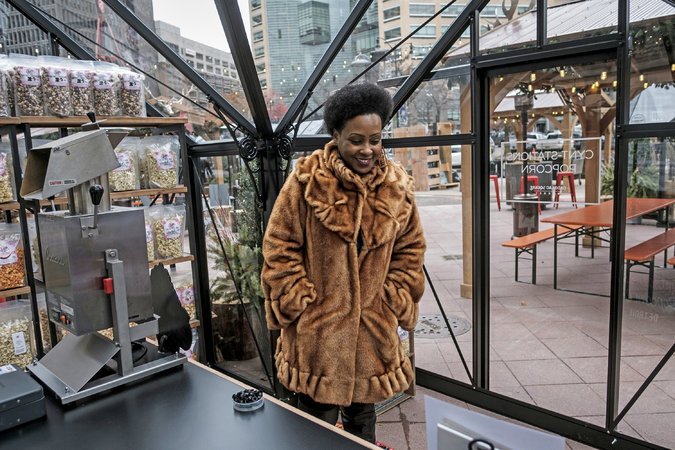
From numerous points of view, Detroit appears to be perfect for such a urban horticultural upheaval: What better approach to actuate those 40 square miles of empty parts than to transform them into farmland? In the event that you visit the huge agriculturists showcase in Eastern Market on ends of the week you will discover a cornucopia of neighborhood create from a portion of the city's 1,400 gardens and ranches.
For Malik Yakini, official chief of the Detroit Black Community Food Security Network, urban farming can't just be about benefits; it must be a demonstration of social equity. Mr. Yakini established D-Town Farm, a seven-section of land cultivate close Grandmont-Rosedale, as a training focus to show youngsters about self-strengthening, nourishment generation and natural stewardship, with a specific accentuation on African conventions of planting and reap.
I went by D-Town Farm on a thick, muggy day in July. Mr. Yakini was caught up with cutting the fields. "Give me a moment," he said. "You can go to work on the off chance that you'd like." I joined a University of Michigan aces understudy and an agriculturist named Babatunde as they diminished minor corn grows. There is something in a flash satisfying about diving your hands into soil still cool from the night. With a straightforward touch I had reached the natural way of life.
"It's about sustenance power," Mr. Yakini said when he completed the process of cutting. "Many individuals in this city don't approach new nourishment. They aren't responsible for the nourishment conveyance frameworks. We're endeavoring to hand that back to individuals." As a feature of this hand back, D-Town has plans of opening the Detroit Food Commons, an eager advancement that will incorporate a center supermarket, a group hatchery kitchen and an address corridor. These are the future royal residences of the nourishment sovereign.
RecoveryPark, on Detroit's East Side, gives another model of urban cultivating altogether. The homestead is in a range that was especially hard hit by the city's downturn. There are more empty parts than houses.
"We observed that with a specific end goal to be beneficial you truly require no less than 10 sections of land," said Gary Wozniak, RecoveryPark's originator. "You have to go huge scale." To this end, RecoveryPark has obtained or procured more than 400 packages of land, totaling around 60 sections of land on the whole. They are basically a business cultivate that simply happens to be in a city. A key part of RecoveryPark's central goal is to offer employments and preparing to addicts and those in recuperation programs who might some way or another battle to look for some kind of employment.
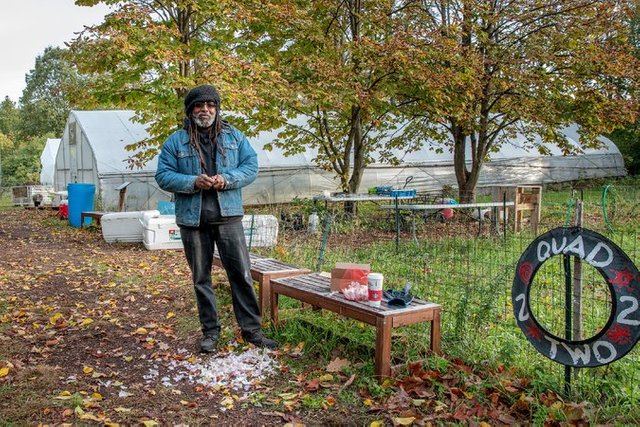
"We're in this as long as possible," Mr. Wozniak said. "In Detroit, you must be."
On paper, RecoveryPark's strategy for success is a wonderful thing, a possibly exceptional model of urban cultivating. Be that as it may, investigating the tremendous development designs of business nurseries, loop houses and indoor tilapia ranches, I ended up pondering: Can regardless we call this a urban neighborhood? It resembles a Zen koan: If you thud a 60-section of land cultivate amidst a city, is it still a city? Where are the walkways? Where are the spots for easygoing contact?
ON MY LAST VISIT to Detroit in July, I remained at the Ark, one of the more abnormal spots I've ever found on Airbnb. It's a sun oriented controlled dispatching holder shack amidst a urban homestead called Food Field. The ranch, keep running by Noah Link, remains on the site of a surrendered cloister. There's a plantation of natural product trees and emus perambulate appropriate out your indirect access. Nourishment Field has an on location cultivate stand and pitches to a scope of Detroit establishments including the chic Selden Standard eatery and the Detroit Zen Center.
At the Ark, everything is off-framework. The sun powered boards encourage a restricted bank of batteries, thus I turned out to be significantly mindful of my electrical use. A container fan, when left on, would remove amidst the night. I would sweat and revile the synchronous hipness and impermeability of transportation compartment shacks until the point that the chickens animated me at day break.
The Ark, for the majority of its bumps, strikes me as a magnificently versatile place — Noah supplants his ranch wage as a host for away visitors and these visitors are thus acquainted with the irresistible, survivalist soul of Detroit. The Ark, similar to the city itself, isn't generally agreeable, however it is an affair you will always remember.
As I was leaving the Ark for the airplane terminal, my telephone beeped. It was Ben Wolf, the delivery compartment fabricator. He had neglected to enlighten me concerning his next task. He was working with a Shakespearean devotee to assemble a versatile, three-story Globe Theater totally out of repurposed dispatching holders. They would visit the auditorium around the city, playing out Shakespeare's entire works for the majority.
"Amazing," I said. "All the world's a phase.'
I had no uncertainty such a fantasy was conceivable. In Detroit — that reasonable city ascending from the night sky — all fantasies are conceivable.


gd post
wow
Great Dear
ভাই আপনিতো কখোনো আপভোট, কমেন্ট করেন না অথচ আমি গ্রুপের সবাইকে আপোট এবং কমেন্ট করি
Good One
nice....
Amazing post man! @hasan1216
good
amazing country of world